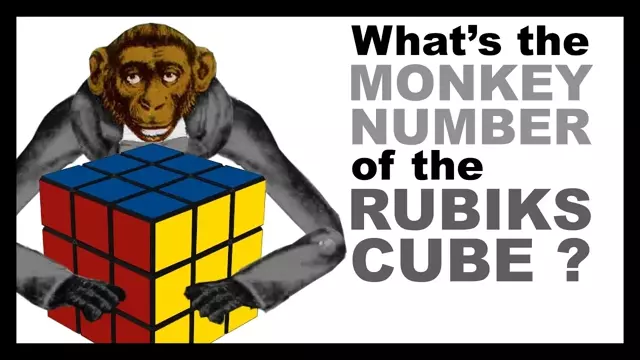2018-06-10
[public] 103K views, 2.98K likes, 83.0 dislikes audio only
NEW (Christmas 2019). Two ways to support Mathologer
Mathologer Patreon: https://www.patreon.com/mathologer
Mathologer PayPal: paypal.me/mathologer
(see the Patreon page for details)
The "Monkey number" is the average number of twists it takes to solve a Rubik's cube starting from a randomly chosen scrambled position and by making random twists. It's pretty obvious that this number will be gigantic but nobody knows the exact value of this number nor even how gigantic a number we are talking about.
So what are the Monkey numbers for the 3x3x3 or the 2x2x2? How do you create a mathematically certified random scramble of a Rubik's cube? And how would a virtual Monkey solver fare in an actual speedcubing competition? Accompany me the Mathologer, my friend Erich Tomanek and our pet monkey as we explore these and other confounding Rubik's cube puzzles.
Check out Erich's infinite monkey lab website: http://www.infinitemonkeylab.com
This fairly accessible article by Peter Doyle contains the maths necessary to calculate the Monkey number in terms of the transition matrix of the markov chain associated with the Rubik's cube : https://arxiv.org/abs/0909.2636 (see in particular Proposition 3).
That the mean recurrence (or return) time is equal to the number of configurations of a Rubik's cube is a corollary of some basic results in the theory of stochastic processes. I came across this insight for the first time in an answer by TonyK to the following question on stackexchange: https://math.stackexchange.com/questions/1608168/random-solving-of-a-rubik-cube
Here are the World Cubing Association rules on scrambling twisty puzzles for competitions:
https://www.worldcubeassociation.org/regulations/#4
Here is a link to a video which shows the scrambling program tnoodle in action: https://github.com/thewca/tnoodle/pull/236
Notes on implementing the 2x2x2 experiments: As with counting configurations of the 2x2x2, we fixed one corner cubie and twisted the three faces not containing this corner. In this video I only report on the most interesting aspects of Erich and my playing around with this circle of problem. We tried lots of other things. Happy to discuss in the comments :)
Many thanks to Jeremy Fleischman and Lucas Garron for their help with understanding how the World Cubing Association creates scrambles of twisty puzzles for cubing competitions. Thank you to Erich for programming all those virtual cubing monkeys. And, as usual, thank you to Marty for nitpicking early drafts of the script and to Danil for his Russian support.
Enjoy!
/youtube/video/vYEhCiP96Hg?t=338.39899
/youtube/video/vYEhCiP96Hg?t=452.66
/youtube/video/vYEhCiP96Hg?t=701.76001
/youtube/video/vYEhCiP96Hg?t=803.38
/youtube/video/yhPH1369OWc

